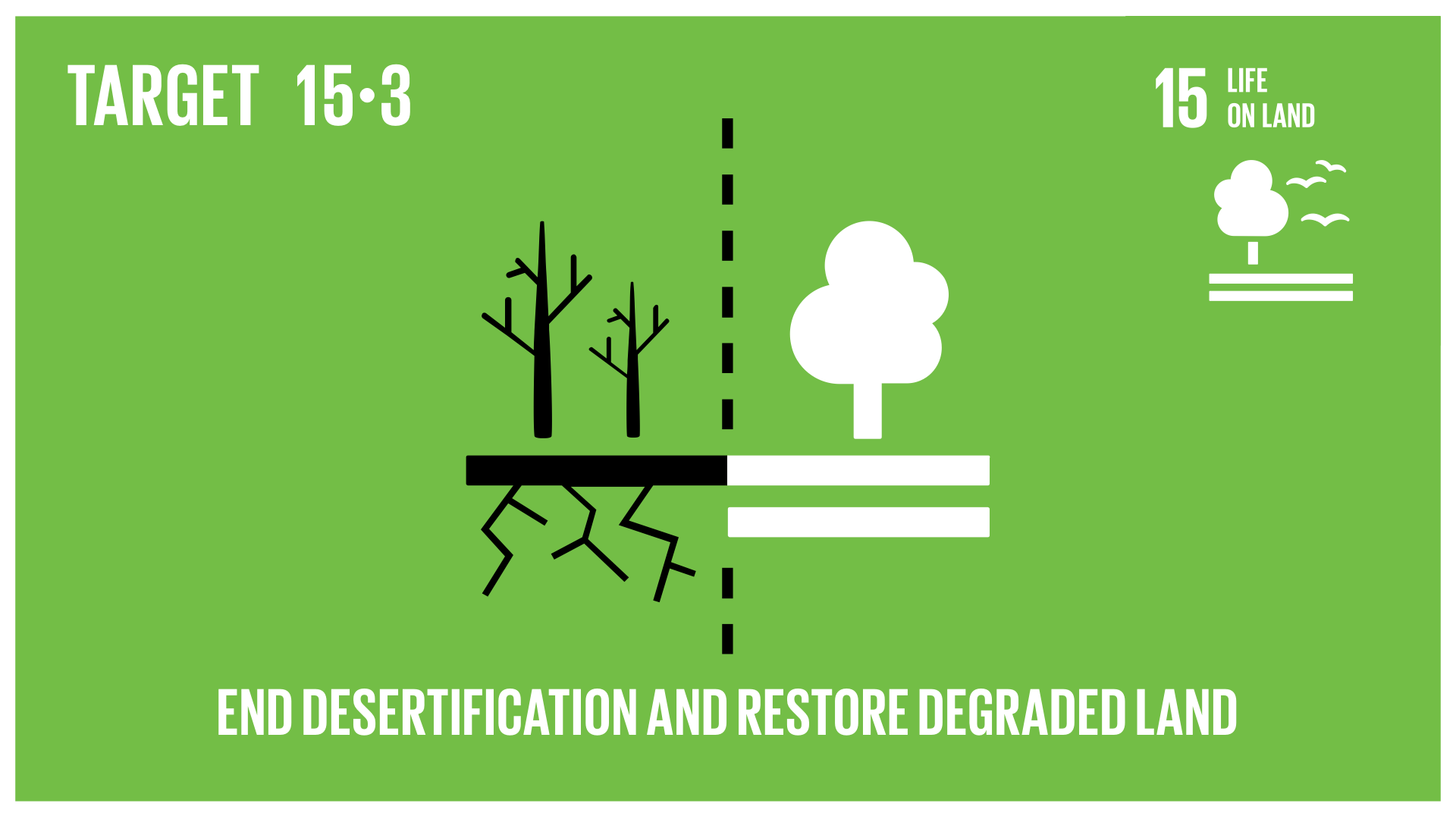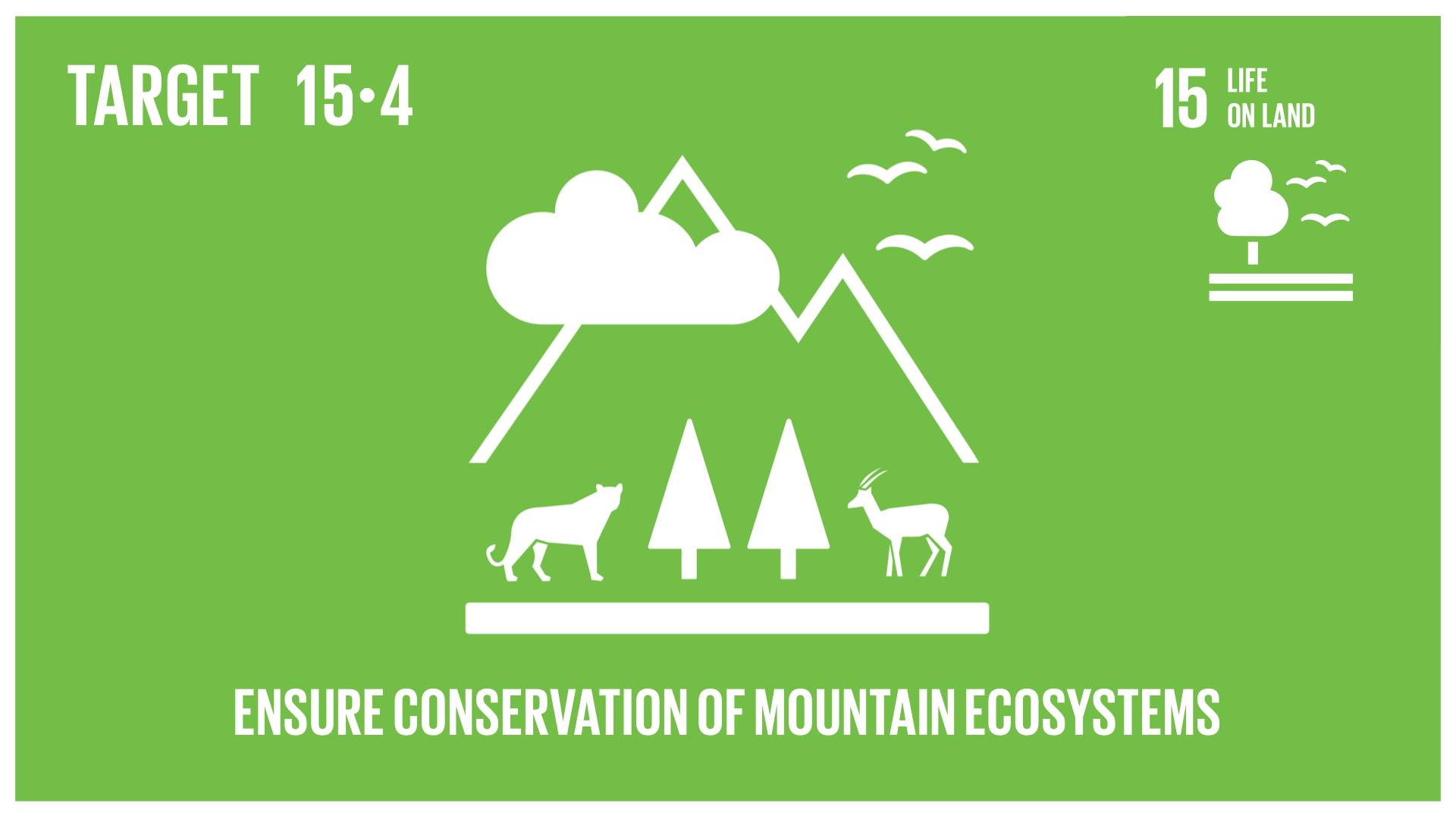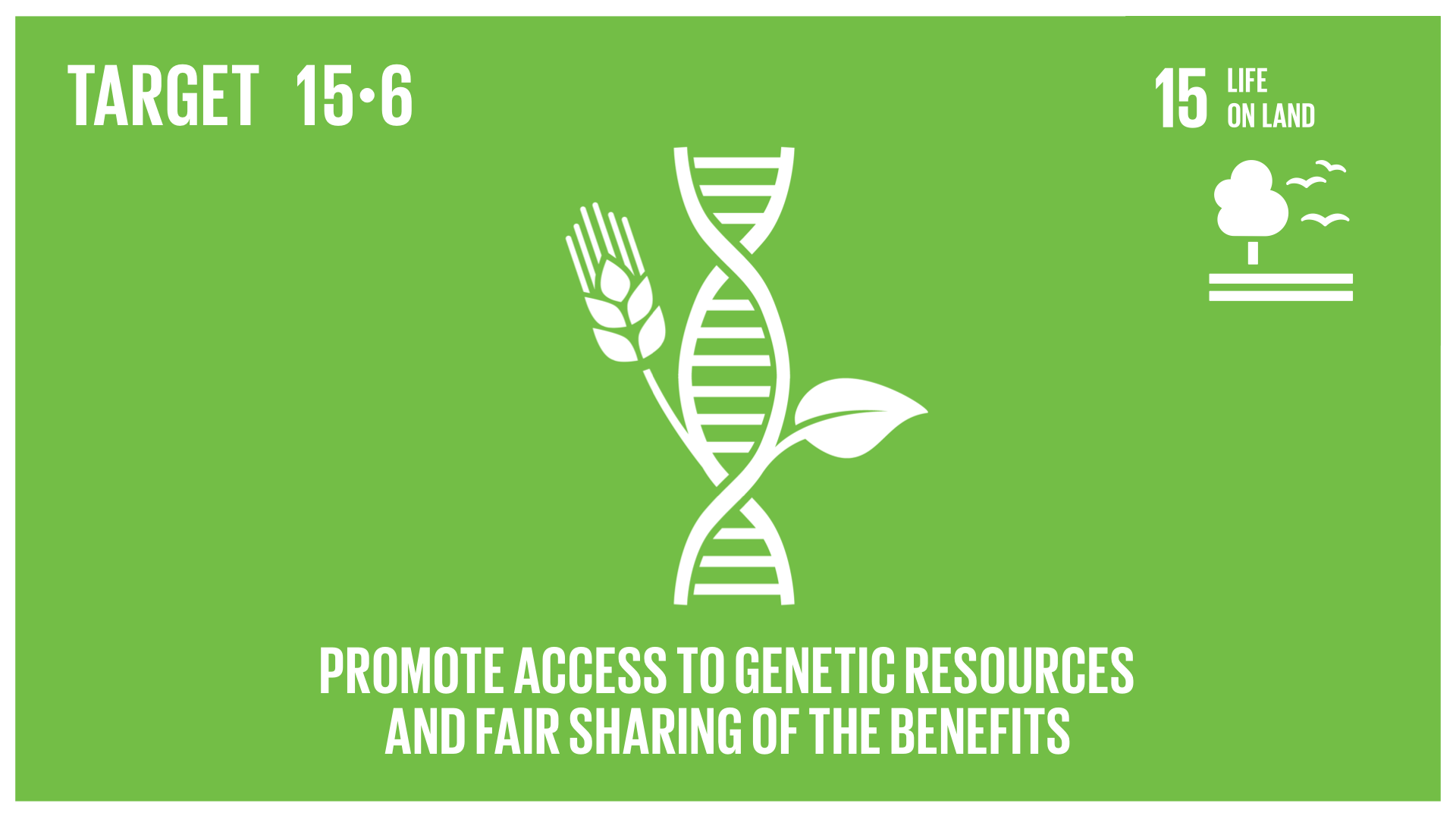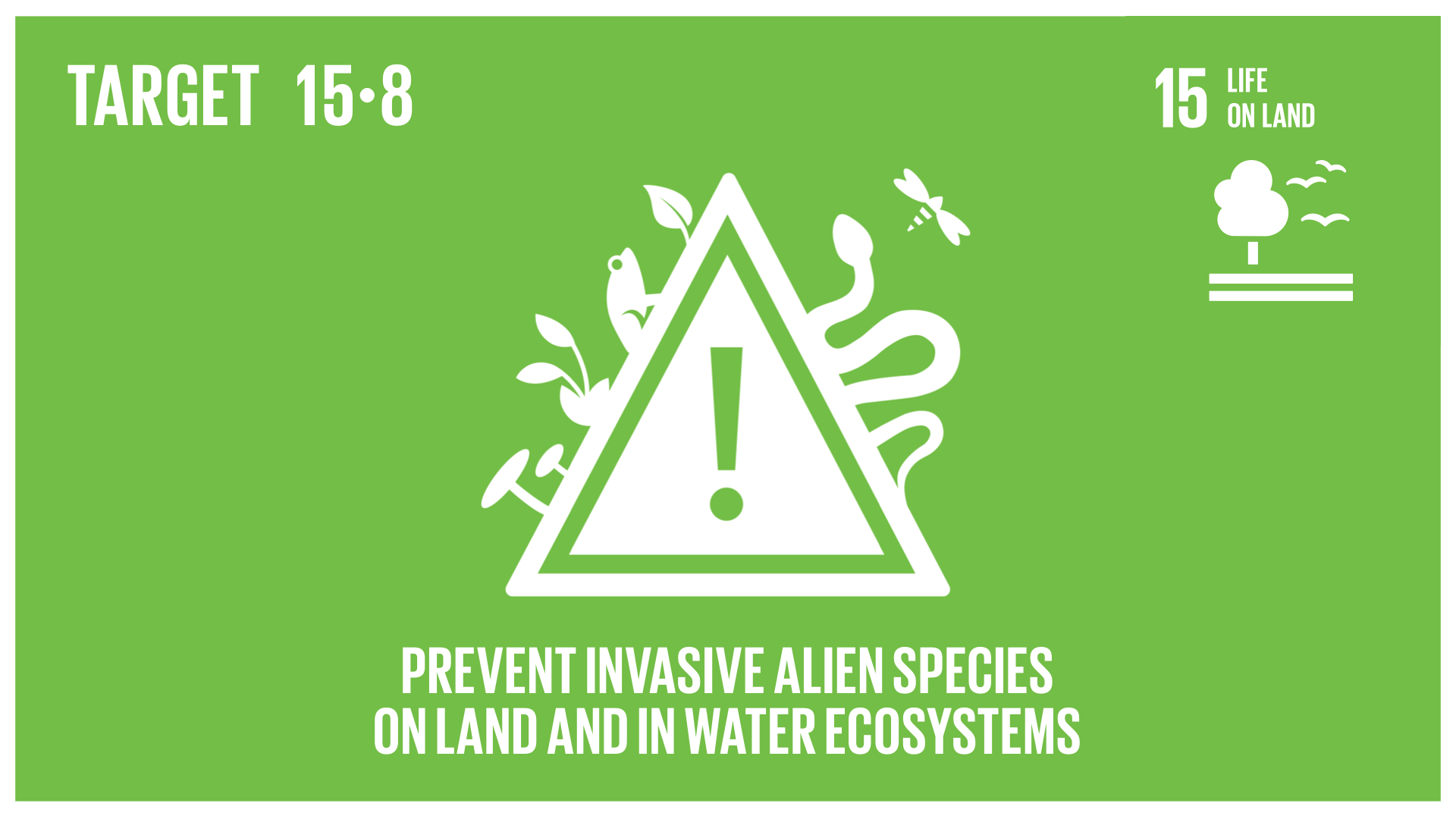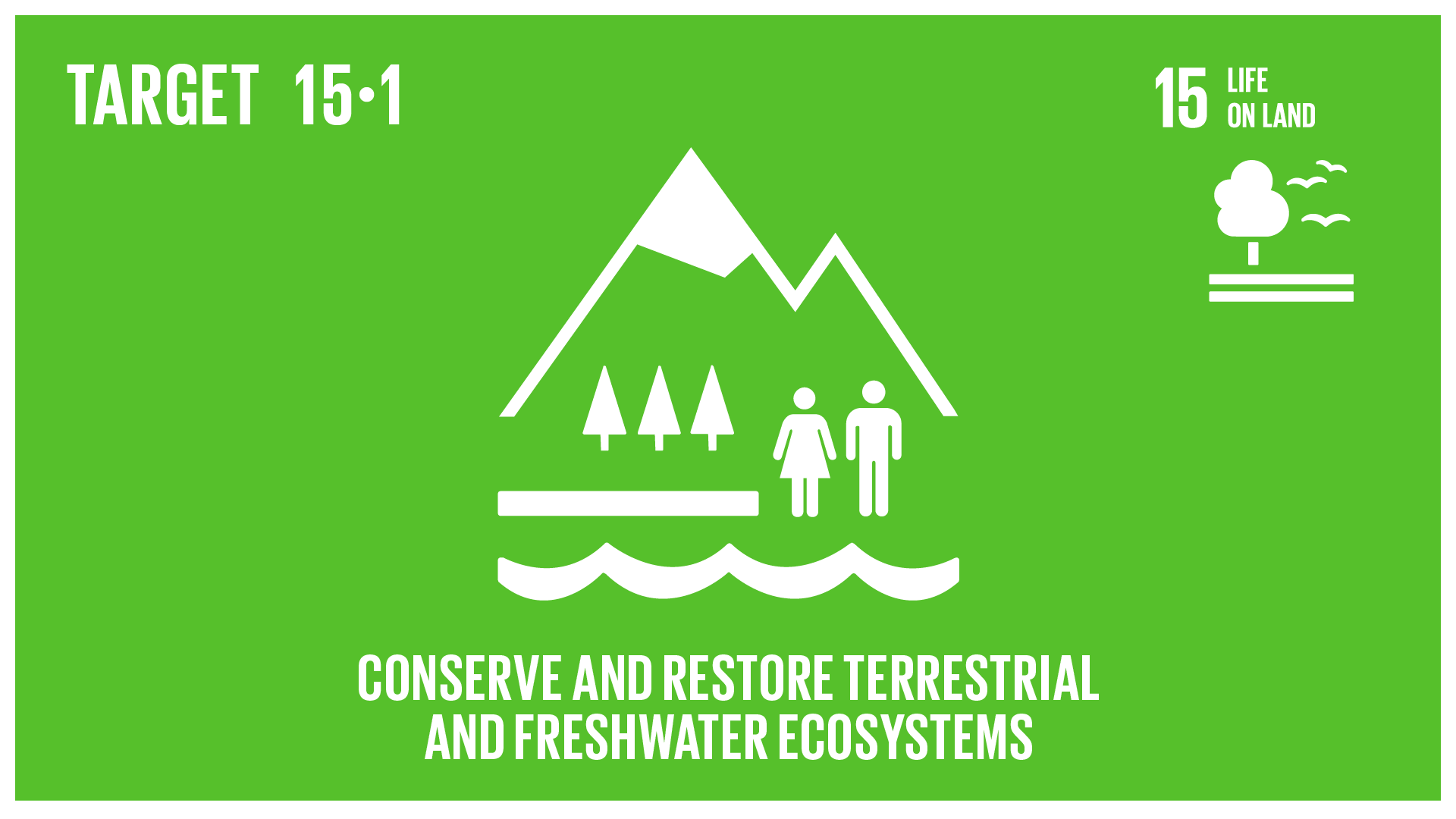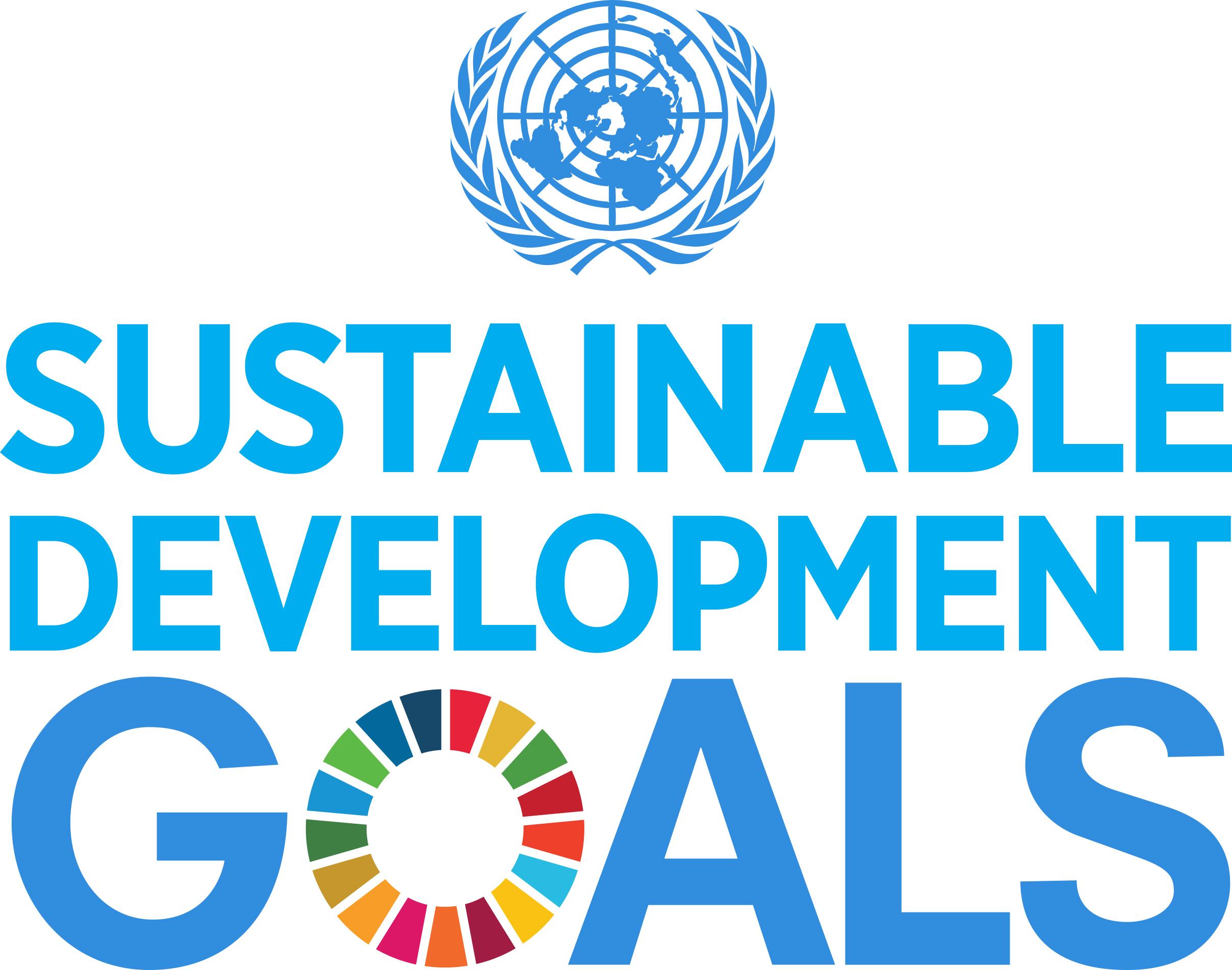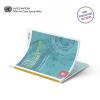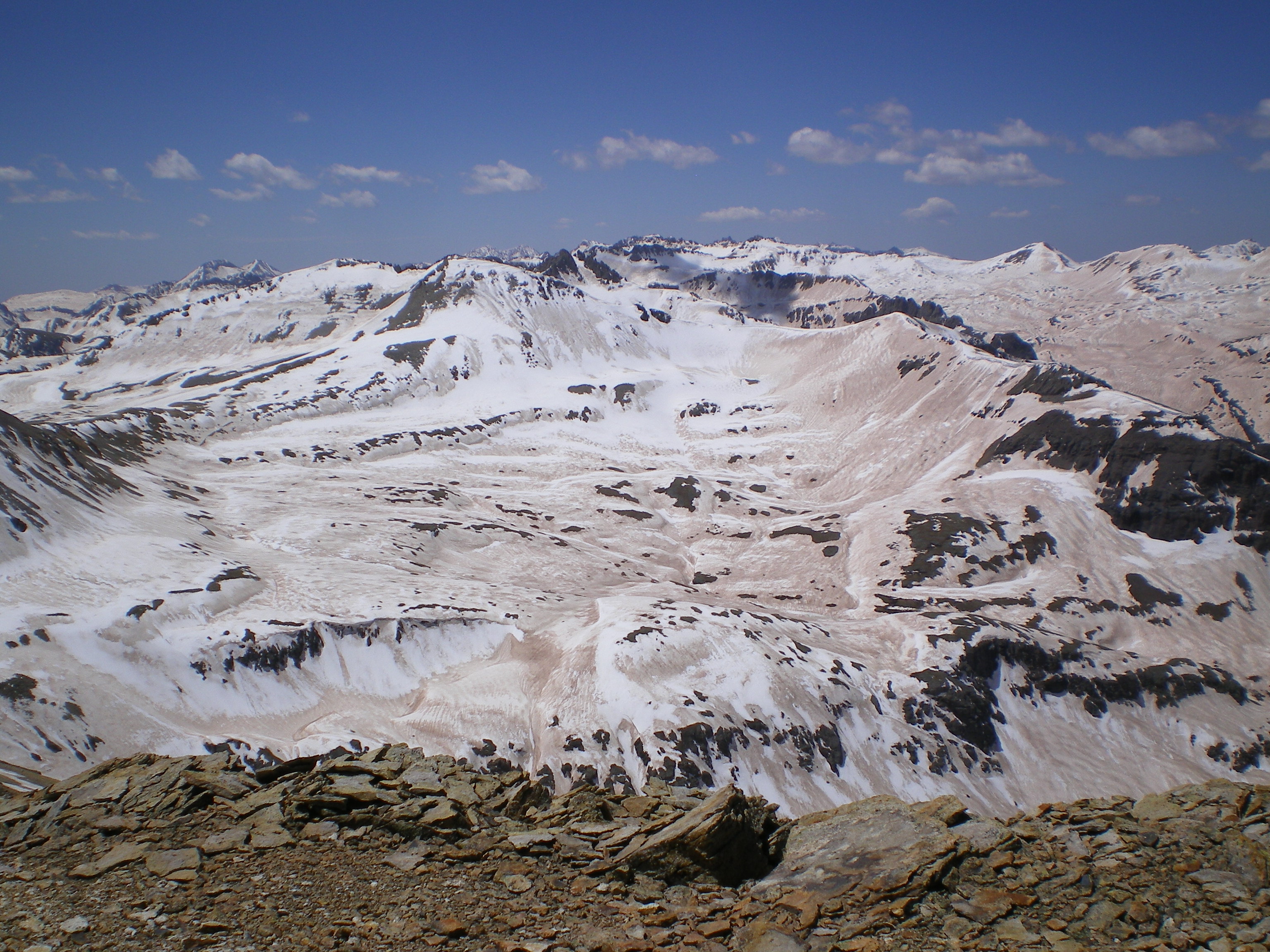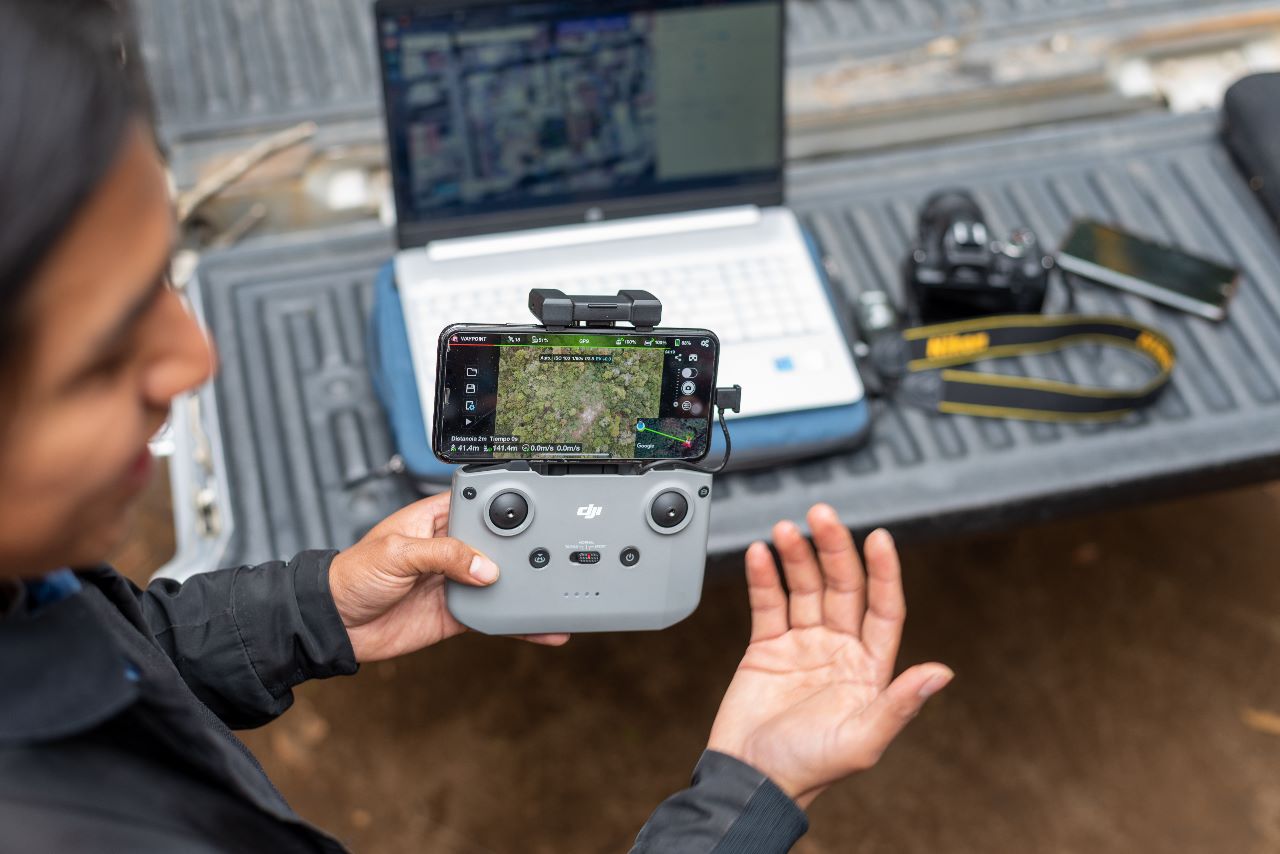SDG 15 - Life on land

Sustainably manage forests, combat desertification, halt and reverse land degradation, halt biodiversity loss
Forests cover 30.7 per cent of the Earth’s surface and, in addition to providing food security and shelter, they are key to combating climate change, protecting biodiversity and the homes of the indigenous population. By protecting forests, we will also be able to strengthen natural resource management and increase land productivity.
At the current time, thirteen million hectares of forests are being lost every year while the persistent degradation of drylands has led to the desertification of 3.6 billion hectares. Even though up to 15% of land is currently under protection, biodiversity is still at risk. Deforestation and desertification – caused by human activities and climate change – pose major challenges to sustainable development and have affected the lives and livelihoods of millions of people in the fight against poverty.
Efforts are being made to manage forests and combat desertification. There are two international agreements being implemented currently that promote the use of resources in an equitable way. Financial investments in support of biodiversity are also being provided.
The Lion’s Share Fund
On 21 June, 2018, the United Nations Development Programme (UNDP), FINCH and founding partner Mars, Incorporated, announced the Lion’s Share, an initiative aimed at transforming the lives of animals across the world by asking advertisers to contribute a percentage of their media spend to conservation and animal welfare projects. The Lion’s Share will see partners contribute 0.5 percent of their media spend to the fund for each advertisement they use featuring an animal. Those funds will be used to support animals and their habitats around the world. The Fund is seeking to raise US$100m a year within three years, with the money being invested in a range of wildlife conservation and animal welfare programs to be implemented by United Nations and civil society organizations.
Facts and Figures
Forests
- Around 1.6 billion people depend on forests for their livelihood, including 70 million indigenous people.
- Forests are home to more than 80 per cent of all terrestrial species of animals, plants and insects.
- Between 2010 and 2015, the world lost 3.3 million hectares of forest areas. Poor rural women depend on common pool resources and are especially affected by their depletion.
Desertification
- 6 billion people depend directly on agriculture, but 52 per cent of the land used for agriculture is moderately or severely affected by soil degradation.
- Arable land loss is estimated at 30 to 35 times the historical rate
- Due to drought and desertification, 12 million hectares are lost each year (23 hectares per minute). Within one year, 20 million tons of grain could have been grown.
- 74 per cent of the poor are directly affected by land degradation globally.
Biodiversity
- Illicit poaching and trafficking of wildlife continues to thwart conservation efforts, with nearly 7,000 species of animals and plants reported in illegal trade involving 120 countries.
- Of the 8,300 animal breeds known, 8 per cent are extinct and 22 per cent are at risk of extinction.
- Of the over 80,000 tree species, less than 1 per cent have been studied for potential use.
- Fish provide 20 per cent of animal protein to about 3 billion people. Only ten species provide about 30 per cent of marine capture fisheries and ten species provide about 50 per cent of aquaculture production.
- Over 80 per cent of the human diet is provided by plants. Only three cereal crops – rice, maize and wheat – provide 60 per cent of energy intake.
- As many as 80 per cent of people living in rural areas in developing countries rely on traditional plant-‐based medicines for basic healthcare.
- Micro-organisms and invertebrates are key to ecosystem services, but their contributions are still poorly known and rarely acknowledged.
Space-based Technologies for SDG 15
Protecting nature and biodiversity is an increasingly important challenge for humanity.
Satellite technology can be used to track endangered species and disrupt the poaching activities that drive the illegal wildlife trade.
UNOOSA helps stakeholders in biodiversity and wildlife management use space applications to monitor, assess and manage biodiversity and ecosystems.
http://www.unoosa.org/oosa/en/ourwork/psa/emnrm/biodiversity.html
Related Content
Article
Wetlands conservation: How satellite observation supports sustainable wetland management
On 2 February 2020, we celebrate World Wetlands Day to raise global awareness about the vital role of wetlands for people and our planet. This year’s edition highlights the connection between water, wetlands, and life.
Conservación de humedales: cómo la observación por satélite apoya la gestión sostenible de los humedales
Translated by: Isabel Zetina
El 2 de febrero de 2020 celebramos el Día Mundial de los Humedales para concienciar al mundo sobre el papel vital de los humedales para las personas y nuestro planeta. La edición de este año destaca la conexión entre el agua, los humedales y la vida.
基于卫星遥感的河流三角洲监测
Translated by Dr. Mengyi Jin
自古以来,河流三角洲因水资源丰富、土壤肥沃及交通便利而成为人类聚居的重要区域。这一格局延续至今。目前,生活在三角洲地区的人口已接近 60 亿,使其成为全球人口最稠密的地区之一(Kuenzer and Renaud 2011)。然而,这些三角洲地区正面临着气候变化、海平面上升、土地利用方式转变以及生态系统退化等威胁。遥感技术在获取环境状况及其时序变化方面具有显著优势,其在识别灾害前兆信号、预测自然现象演变等方面发挥着关键作用。在三角洲地区,遥感已被广泛应用于海岸线变化监测、洪水监测与预测等领域(Merkuryeva et al. 2015;Li and Damen 2010)。持续开展三角洲监测不仅有助于维护其生态功能,还能及时识别潜在风险,并为科学管理提供重要依据,而遥感正是实现这一目标的关键技术。
Conservación de humedales: cómo la observación por satélite apoya la gestión sostenible de los humedales
Translated by: Isabel Zetina
El 2 de febrero de 2020 celebramos el Día Mundial de los Humedales para concienciar al mundo sobre el papel vital de los humedales para las personas y nuestro planeta. La edición de este año destaca la conexión entre el agua, los humedales y la vida.
Наводнения в Судане - Космический мониторинг наводнений для управления рисками стихийных бедствий
Translated by Marina Agarkova
В 2019 году наводнения стали причиной 43,5% всех смертей в результате стихийных бедствий и, таким образом, представляют собой самый смертоносный тип бедствия с растущим числом событий по сравнению с предыдущими годами (CRED, 2019). Кроме того, наводнения приводят к наибольшему числу пострадавших людей по сравнению с другими бедствиями, поскольку они влияют на деятельность человека и экономику (CRED, 2019; Elagib et al. 2019).
Наводнения в Судане - Космический мониторинг наводнений для управления рисками стихийных бедствий
Translated by Marina Agarkova
В 2019 году наводнения стали причиной 43,5% всех смертей в результате стихийных бедствий и, таким образом, представляют собой самый смертоносный тип бедствия с растущим числом событий по сравнению с предыдущими годами (CRED, 2019). Кроме того, наводнения приводят к наибольшему числу пострадавших людей по сравнению с другими бедствиями, поскольку они влияют на деятельность человека и экономику (CRED, 2019; Elagib et al. 2019).
Wetlands conservation: How satellite observation supports sustainable wetland management
On 2 February 2020, we celebrate World Wetlands Day to raise global awareness about the vital role of wetlands for people and our planet. This year’s edition highlights the connection between water, wetlands, and life.
Наводнения в Судане - Космический мониторинг наводнений для управления рисками стихийных бедствий
Translated by Marina Agarkova
В 2019 году наводнения стали причиной 43,5% всех смертей в результате стихийных бедствий и, таким образом, представляют собой самый смертоносный тип бедствия с растущим числом событий по сравнению с предыдущими годами (CRED, 2019). Кроме того, наводнения приводят к наибольшему числу пострадавших людей по сравнению с другими бедствиями, поскольку они влияют на деятельность человека и экономику (CRED, 2019; Elagib et al. 2019).
Call for contributions to the PaleBlueDOT challenge by NASA and the United States Permanent Mission in Vienna
Are you interested in leveraging public Earth observation data and visualization techniques to contribute to SDGS? You have until 26 January 2024 to sign-up to the PaleBlueDot challenge organized on behalf of NASA and the US mission to international organization in Vienna.
Register for the 1st Space4Water Stakeholder Meeting - End or registration: 30 September
Space4Water stakeholders, featured young professionals and professionals, join us in Vienna at the 1st Space4Water Stakeholder Meeting.
Dates and location
The workshop will take place on 27-28 October 2022 at the Vienna International Centre, with an opportunity to host it online, should COVID prevent travels in October.
Registration
To be considered for participation Space4Water stakeholders and featured professionals can register here.
Register for the 3rd Space4Water Stakeholder Meeting: Registration open
24-25 October 2023, at the Vienna International Centre
organised by the United Nations Office for Outer Space Affairs
co-organised with the Prince Sultan Bin Abdulaziz International Prize for Water (PSIPW)
This event is restricted to Space4Water stakeholders, featured professionals, young professionals and representatives of Indigenous communities featured on the portal.
Register for the 2nd Space4Water Stakeholder Meeting - End of registration: 30 April
organised by UNOOSA in partnership with the Prince Sultan Bin Abdulaziz International Prize for Water (PSIPW)
11-12 May 2023, Online
This event is restricted to Space4Water stakeholders, featured professionals, young professionals and representatives of Indigenous communities featured on the portal.
Registration for speakers submitting technical presentations closes on 15 April 2023.
Registration for all other participants closes on 30 April 2023.
Capacity Building and Training Material
Event
Participatory workshop for indigenous women on their roles and responsibilities related to water
register here until 21 August 2022 - if you would like to be considered for funding
In many places around the world women are responsible for water collection, a responsibility that globally takes them 200 million hours annually. It often leaves them with little to no time for school, work or to spend time with their family. Furthermore, indigenous communities' cultural heritage and knowledge about natural resources, including water, urgently needs to be considered and protected.
United Nations/Costa Rica/PSIPW - Sixth conference on the use of space technology for water management
San José, Costa Rica, 7-10 May 2024 (with a possibility of online attendance) - streaming in UTC-8 time zone.
Hosted and supported by the Inter-American Institute for Cooperation on Agriculture (IICA)
Co-sponsored by the Prince Sultan Bin Abdulaziz International Prize for Water (PSIPW)
Local Perspectives Case Studies
Project / Mission / Initiative / Community Portal
WMO Hydrological Observing System Portal
Currently, WHOS makes available three data portals allowing users to easily leverage common WHOS functionalities such as data discovery and data access, on the web by means of common web browsers. For more information on WHOS data and available tools, please refer to the Section WHOS web services and supported tools.
WHOS-Global Portal provides all hydrometeorological data shared through WHOS. WHOS-Global Portal is implemented using the Water Data Explorer application.



